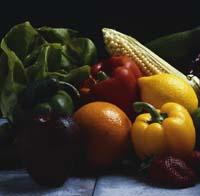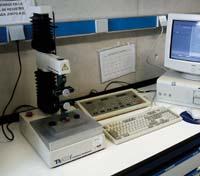Edible wrappers for the future

Today, most foods reach the consumer in some type of packaging. These packaging are to be used and pulled or can be used in a very short time. However, in most cases they are waste. For this reason, in recent years the range of edible covers is being consolidated. Edible covers are transparent films that collect food and serve as a barrier to moisture and oxygen. In addition, these films can be used as additive support to maintain product characteristics and improve their appearance.
The Navarrese chemist Javier Osés Fernández has made a thesis on this subject at the Public University of Navarra. In this work he has analyzed several edible covers based on isolated whey proteins (WPI), mosque gum (polysaccharide extracted from the Mexican mesquite tree) and starch. The objective has been to analyze its applications in the food industry.
Mosque gum, effective and economical solution
To check the effectiveness of edible covers against synthetic packaging, with these three compounds, chemist Javier Osés made a series of films. For six months he stored them in different relative humidity and found that the properties of some films varied depending on humidity, which is not convenient. In fact, the properties of the film should be the same at first and in six months to maintain the properties of food.
All these films are quite hard and therefore plasticizers are added. Plasticizers give the film flexibility. In this work it was also observed that the mechanical properties of packaging, based on whey proteins, vary in some cases depending on the plasticizer that presents the packaging. For example, the mechanical properties of packaging containing sorbitol plasticizer changed. In those carrying glycerol plasticizer, however, it did not occur.

After selecting the right plasticizer for packaging, it was proven that it was essential to introduce a large number of glycerols to improve flexibility. However, the use of large quantities of plasticizers increased water vapor permeability, limiting film applications. To alleviate this vacuum, the whey protein film was added to the mosque gum. As a result of this mixture, the film was able to resist moisture and maintain the proper mechanical properties. For Javier Osés, the gum mosque is a promising, economical and effective option. In addition, he said that, in addition to being an effective option for food maintenance, it can be a source of economic resources for indigenous countries and contribute to reducing land desertification.
It is currently mostly used as a fruit wrapper, but in general, the packaging system is effective in keeping easily oxidized foods such as nuts, meats or fish such as salmon.
The Navarrese researcher also analyzed in his thesis the degree to which edible films were able to maintain fatty foods. For this he used sunflower oil as a model. First, he conducted several trials with WPI packaging from serum. The results indicate that the protective capacity of the film depended on its plasticizer quantity, thickness and relative humidity of the food storage process. Thus, the most efficient WPI films were the thickest, the least plasticizers and the least relative humidity.
In another phase he conducted a similar experiment with starch films. Starch versus oxygen
It is an effective barrier of execution. In this case, film thickness did not influence oil protection, but noted that starch films were more effective in environments with high relative humidity.

The future of packaging
Currently, the food industry mainly uses three food maintenance systems: vacuum packaging, nitrogen sweeping and aluminum films. According to the Navarrese chemist, food films will be the future packaging. Although this method is still to be exploited in the market, it is an opportunity that opens new avenues. On the one hand, the long lifespan of healthy foods, and on the other hand, the environmental benefits derived from the reduction of the use of conventional plastics.
For Javier Osés, this system has numerous advantages, but they are also barriers that hinder its development. Edible covers are very expensive. It is still under investigation and companies do not have the technology to apply this system. The use of this system is currently limited to products of high added value.





